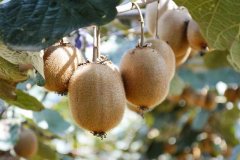Japanese sweet potatoes are used like this! The best raw material of Japanese soju
The bottle shape of soju is similar to that of sake, and the wine label usually appears with Japanese kanji and katakana, and they are also displayed on the wine shelves of Japanese restaurants and supermarkets, and they are all transparent or yellowish when poured into the wine glass. so it is often mistaken for the same thing.
The biggest difference between the two is the raw material and the brewing method.
The raw material of sake is rice, while the mainstream raw materials of soju are sweet potato, rice and barley. In recent years, the thinking of the soju industry has been greatly inspired, and soju based on black sugar, chestnuts, perilla, black beans, vegetables and even milk have sprung up one after another.
Sake is fermented wine with a maximum alcohol content of 22 degrees (14-17 degrees for mainstream sake on the market), while soju, as its name implies, means distillation-a wine that is fermented and then distilled, with an alcohol content of more than 25 degrees and a maximum of 60 degrees.
2. Japanese soju was not used to drink at first.
One of the theories about the origin of Japanese soju is that in order to enrich the country and strengthen the army, the 28th vassal of the Satsuma clan at the end of the shogunate developed the arms industry and built an arsenal next to his residence, Xianyan Park. In addition to producing cannons and warships, he also used Samoya (that is, sweet potatoes), a local local specialty of Satsuma, as raw materials to distill alcohol wantonly as munitions and industrial supplies. But then Shimadzu Qisan was defeated in the Saxo-British War, his factory was burned down, and the munitions alcohol was no longer useful. However, it was found that the alcohol distilled from Samoto taro tasted just right; at that time, even the wealthier Japanese were able to drink sake, so these soju made from cheap sweet potatoes naturally became gifts to the poor.
3. Why Japanese soju is not as famous as sake, the reason should be that its taste is very special
The flavor of soju is so special that many people do not accept it!
Among the many different types of soju, the most mainstream taro roast (in fact, sweet potato roast) is the least easily accepted by the Chinese. Most taro yams have an eerily sweet taste, giving the impression that the sweetness in sweet potatoes is not well combined with alcohol-especially in low-end soju. In barley soju and rice soju, this feeling is milder.
4. Soju is actually more popular than sake in Japan
In Japan, the consumption of soju is greater than sake. This makes me feel quite powerless to complain. After all, apart from being a little cheaper and a little more alcoholic, what other advantages do soju have compared with sake?

- Prev

Which is better, red heart, yellow heart, kiwifruit or green heart?
Green heart kiwifruit picked from the tree is relatively hard, need to be placed at room temperature for about 6 days to achieve the effect of natural ripening; yellow heart kiwifruit and green heart is different, as long as touch a little soft feeling can eat. Relatively, many people say that Huang Xin's will taste better.
- Next

Li Ren supports green conservation farmers to promote environment-friendly tea and coffee
The Li Jen Company, which cares about land and ecology, has long encouraged the public to support organic and friendly farming, and has also helped a group of farmers who are friendly to the environment, actively restore land diversity and promote green conservation through the Tzu Xin Organic Agriculture Development Foundation. Li Ren Yu
Related
- The first cup of black tea in spring, the flavor and history of tea gardens in Kenya, Africa
- The computer can not only choose potatoes, but also grow tea rice. AI will grow winter oolong tea champion.
- It is not only the inflated tea bitten by insects, but also engraved with the four seasons tea in Beipu.
- The Oriental Beauty Tea Festival in Zhuxian County takes the stage at the weekend to experience the plus-size feast of oil tea.
- & quot; Oriental Beauty Tea & Exploration of Emei in Hsinchu, the hometown of quot;
- The new variety of strawberry "Tainong 1" dessert is the first choice with mellow aroma. Crimson gorgeous
- History of Tea in Taiwan: from Wild Inner Mountain to Export Tea Garden
- Two types of Taiwan Oriental Beauty Black Tea won the British three-Star Award for Childhood Tea Xiang Zhang Jiaqi changed from pilot to champion tea maker.
- Banana species and varieties: the planting history of Taiwan Xianren banana and dwarf banana is long, is banana disease resistant?
- Coffee planting Technology: Qianjie Coffee from Seedling to harvesting

